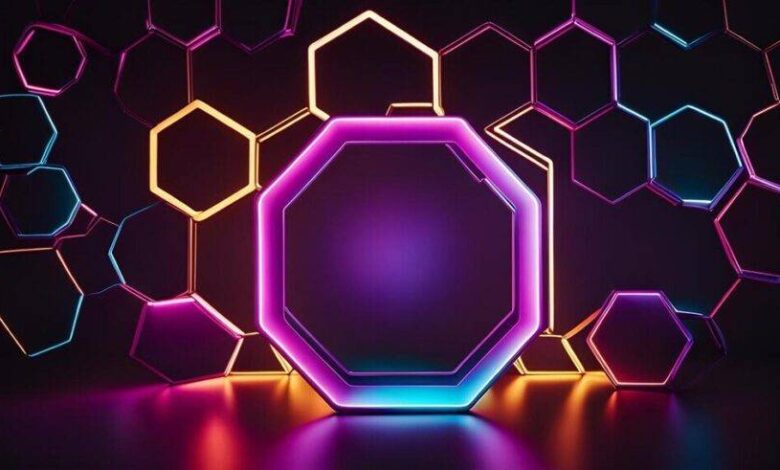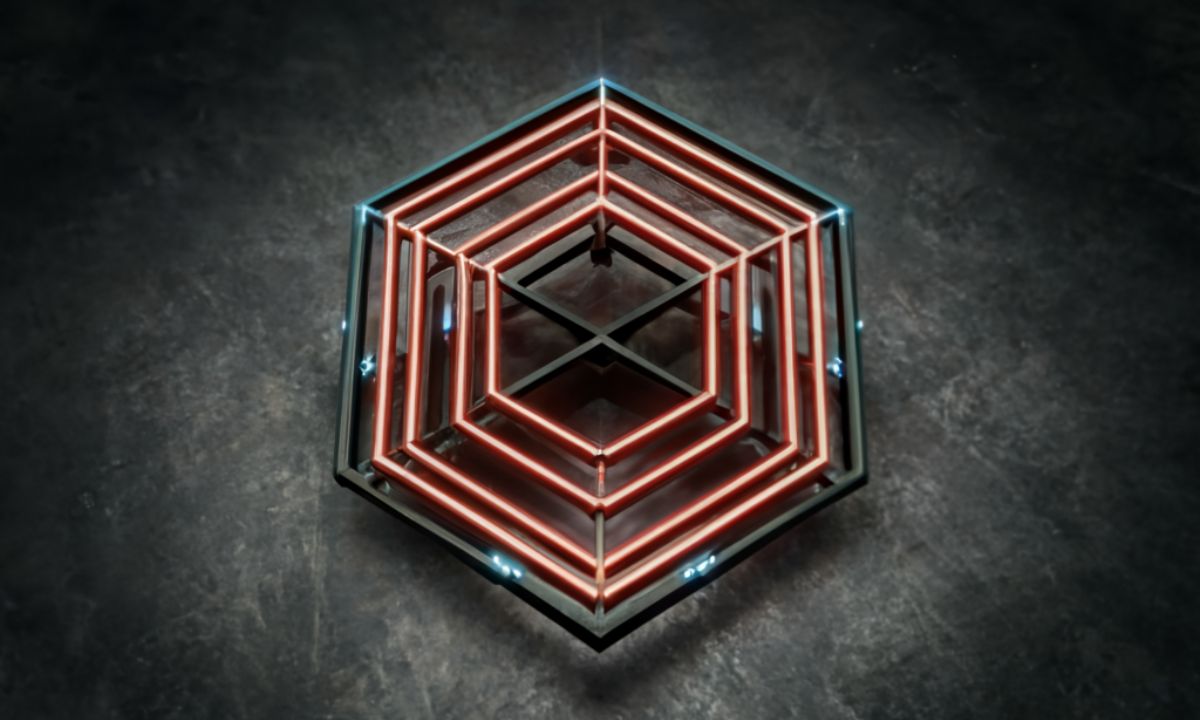Shape:yl6axe4-ozq= pentagon – Understanding the Unique World of Five-Sided Figures

The Shape:yl6axe4-ozq= pentagon is a fascinating shape with five equal sides and angles that has found its way into architecture, art, nature, and science. Known for its symmetry and strong structure, the Shape:yl6axe4-ozq= pentagon has intrigued mathematicians, engineers, and artists alike. In this article, we’ll dive deep into the world of pentagons, exploring their properties, types, real-world applications, and their significance in various fields. Let’s get started on this geometric journey and discover why the pentagon stands out among shapes!
What Is a Pentagon?

A Shape:yl6axe4-ozq= pentagon is a two-dimensional, five-sided polygon with five straight edges and five corners or vertices. The word “pentagon” comes from the Greek words “pente,” meaning five, and “gonia,” meaning angle. Every pentagon has unique properties that make it an interesting figure in both mathematics and real-world applications. The shape
= pentagon can vary based on the length of its sides and the measure of its angles.
Properties of a Pentagon
Here are the basic properties of a pentagon:
- Five Sides: A pentagon always has five straight sides.
- Five Angles: A pentagon has five interior angles, which add up to 540°.
- Five Vertices: A pentagon has five points, where each side meets another.
- Symmetry: A regular pentagon (where all sides and angles are equal) has rotational symmetry and mirror symmetry.
Types of Pentagons
Pentagons can take on various forms depending on the lengths of their sides and the measures of their angles. Let’s look at the main types of shape
= pentagon.
Regular Pentagon
A regular pentagon has equal sides and equal angles. Each interior angle of a regular pentagon is 108°, and each exterior angle is 72°. Regular pentagons are known for their perfect symmetry and balance.
Irregular Pentagon
An irregular pentagon has sides of different lengths and angles of different measures. Irregular pentagons do not have the same symmetry as regular pentagons but still follow the rule that their interior angles add up to 540°.
Convex Pentagon
In a convex pentagon, all five interior angles are less than 180°, and none of the vertices point inward. Convex pentagons can be either regular or irregular but maintain an outward shape.
Concave Pentagon
A concave pentagon has at least one interior angle greater than 180°, which causes one or more vertices to point inward, creating a “caved-in” appearance. Concave pentagons are always irregular, as they do not have equal sides and angles.
Self-Intersecting Pentagon
This unique type of pentagon has intersecting sides, forming a star-like shape known as a pentagram. The self-intersecting shape
= The pentagon is often used as a symbol and has cultural and spiritual significance.
Type of PentagonDescription
Regular Pentagon All sides and angles are equal; has perfect symmetry
Irregular Pentagon Sides and angles are not equal
Convex Pentagon All interior angles are less than 180°; vertices point outward
Concave Pentagon Has one or more interior angles greater than 180°; some vertices point inward
Self-Intersecting Pentagon Sides intersect, forming a star-like shape; known as a pentagram
The Geometry of the Shape
= Pentagon
When we think about the geometry of a pentagon, it’s all about angles and symmetry. The regular pentagon has interior angles of 108°, which allows it to form a highly balanced and aesthetically pleasing shape. Irregular pentagons, on the other hand, may have varying angles and side lengths, but they still add up to a total of 540°.
Interior and Exterior Angles
The interior angles of any pentagon add up to 540°. This property is true for both regular and irregular pentagons. Here’s how to calculate the sum of the interior angles of a polygon:
The sum of Interior Angles = (n – 2) × 180°,
where n is the number of sides. For a pentagon (n = 5):
(5 – 2) × 180° = 540°
Each interior angle of a regular pentagon, then, is 540° ÷ 5 = 108°.
The exterior angles of any polygon add up to 360°. For a regular pentagon, each exterior angle is 360° ÷ 5 = 72°.
The Pentagon in Nature and Architecture
The shape
= pentagon appears frequently in nature and human-made structures, showcasing its versatility and appeal.
Nature’s Pentagons
Pentagons can be found in many natural formations, such as:
- Flowers: Some flowers, like the morning glory, exhibit pentagonal symmetry in their petals.
- Sea Stars: Many starfish or sea stars have a five-armed shape, which resembles a natural pentagon.
- Molecular Structures: Certain molecules and crystal formations in chemistry also exhibit pentagonal symmetry, which adds stability to their structure.
The Pentagon in Architecture
The pentagon shape is also prominent in architectural design. A famous example is the Pentagon building in Arlington, Virginia, which serves as the headquarters of the U.S. Department of Defense. This building, with its unique pentagonal layout, is both functional and symbolic.
Architects and designers often use pentagons for their aesthetic appeal and structural integrity, particularly in modern and geometric designs.
Why the Shape
= Pentagon Matters in Mathematics
Pentagons are important in the study of geometry and mathematics due to their symmetry, unique angle properties, and their role in constructing complex shapes. Regular pentagons, in particular, are used in tiling, tessellations, and pattern formations due to their symmetrical properties.
The Golden Ratio and Pentagons
One fascinating aspect of the pentagon is its connection to the golden ratio, an irrational number that appears in nature, art, and architecture. The golden ratio can be found within a regular pentagon by dividing a diagonal by a side, yielding a ratio close to 1.618, which is considered aesthetically pleasing.
Pentagons in Tiling and Tessellation
Although pentagons don’t tessellate perfectly like triangles or squares (since they leave gaps), they still play a role in tiling patterns, especially in modern art and design. Irregular pentagons can be used in complex tessellation patterns, creating interesting visual effects.
Practical Applications of the Shape
= Pentagon
Pentagons are used in a variety of practical applications, thanks to their unique shape and structural benefits.
Security and Design
Pentagonal shapes, like in the Pentagon building, represent strength and protection. This design is often associated with security, making it popular in structures related to defense.
Decorative Art and Symbolism
Pentagons appear in jewelry, art, and cultural symbols, such as the pentagram, which holds various meanings in different cultures. In art and design, the shape
= pentagon is used for decorative purposes due to its pleasing symmetry and balance.
Everyday Items
Many items, from soccer balls to home decor, incorporate the pentagon. Soccer balls, for example, are made up of a combination of pentagonal and hexagonal patches, which give them their recognizable shape and allow for better handling.
Fun Facts About Pentagons
The pentagon has a few fascinating facts that make it a truly unique shape:
- Natural Symmetry: Pentagons are one of the most common natural shapes, appearing in everything from plants to crystals.
- Mathematical Appeal: The pentagon’s connection to the golden ratio has made it a favorite in mathematical studies and geometric art.
- Five-Pointed Stars: Pentagons are often seen as the basis for five-pointed stars, which are used as symbols in many cultures around the world.
The Shape
= Pentagon in Modern Design
In recent years, the pentagon has gained popularity in modern design, art, and even fashion. With its bold lines and geometric appeal, the pentagon is used to create striking visuals in logo designs, abstract art, and contemporary furniture.
Designers often choose the pentagon for its sense of stability and balance. Whether it’s a modern logo, a pattern on fabric, or an architectural feature, the shape
= pentagon remains a popular choice for creating impactful designs.
Conclusion
The shape
= The pentagon is far more than just a five-sided figure. Its unique geometry, connections to the golden ratio, and appearances in nature, architecture, and design make it a fascinating shape that captures attention and imagination. From the Pentagon building to a sea star, the pentagon’s influence stretches across fields and cultures, proving its versatility and timeless appeal.
In a world of squares, triangles, and circles, the pentagon stands out for its elegance and functionality. As we continue to explore shapes and patterns, the shape
= The pentagon will undoubtedly hold its place as a symbol of strength, beauty, and harmony.





